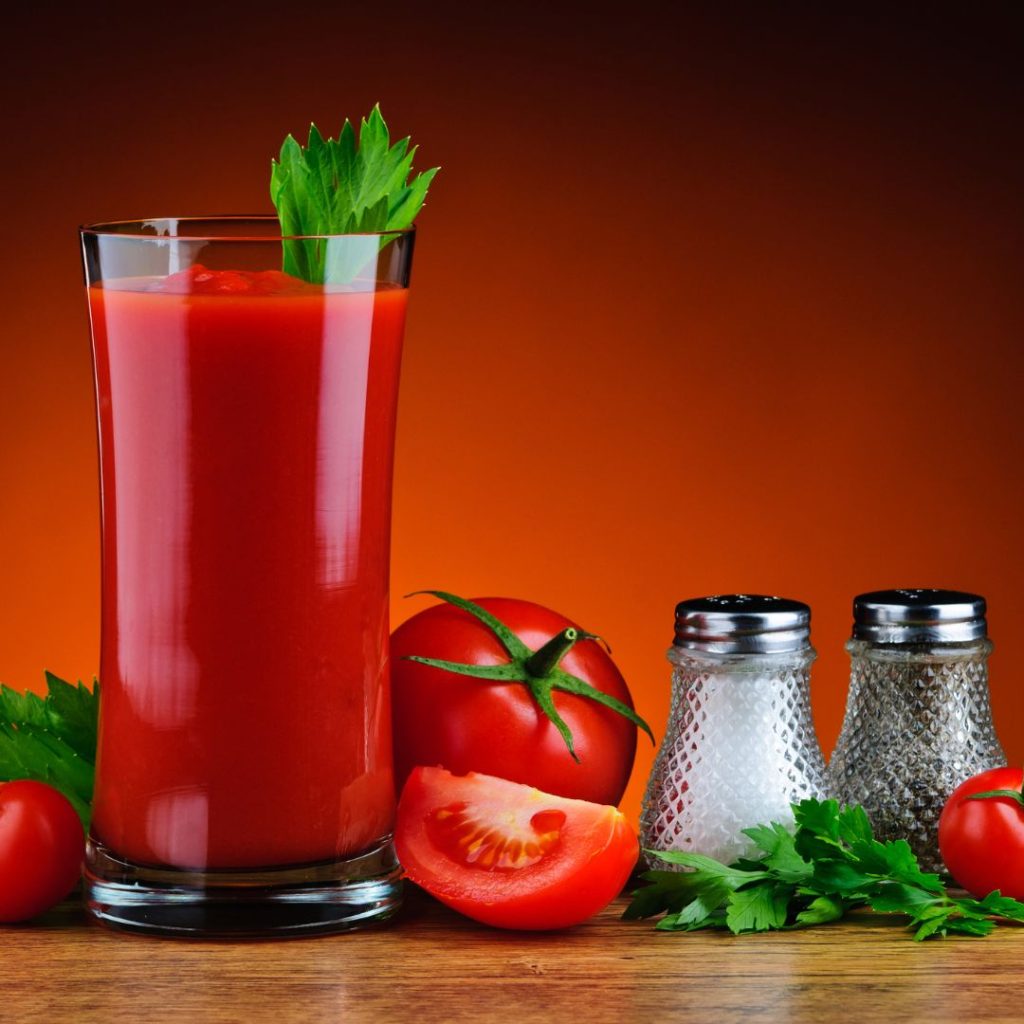All fields are required
Posted in Our Blog on March 25, 2024

A recent study published from Cornell University in the American Society for Microbiology journal Microbiology Spectrum confirms antimicrobial properties in tomato juice show impact on typhoidal Salmonella species – a pathogen responsible for typhoid fever and often spread by consuming contaminated water. Drinking tomato juice already had plenty of known health benefits. Add one more to the list!
It kills germs!
Old wives tales, crunchy mamas, and grandmothers across the country have been touting the health benefits of tomatoes for ages. This highly popular and globally available fruit (yes, tomato is in fact a fruit and not a vegetable) has a plethora of benefits to go along with its versatility as a culinary staple.
Found in sauces, condiments, stews, soups, stir fries, and other dishes, tomatoes are easy to incorporate into your daily diet.
Loaded with magnesium, potassium, and B vitamins, tomato juice is an MVP when it comes to heart health and metabolic functions. Some studies have shown that tomatoes have been associated with improved heart health and heart disease risk factors.
The abundance of lycopene, polyphenols, vitamins, minerals, and potent antioxidants make it a significant topic in the natural medicine world. In fact, just one cup of tomato juice provides just about your entire daily need of vitamin C and 22% of your vitamin A requirements due to the alpha- and beta-carotenoids it contains.
Your body converts these carotenoids into Vitamin A in your body. This helps protect your cells from damage caused by free radicals.
Free radicals are molecular-level compounds that contain an unpaired electron.
Break out the high school chemistry book for this one!
Having an unpaired electron makes it unstable. It wants to either give up an extra electron or collect an electron from other molecules. When they steal electrons or let their extra one free, it affects important molecules in the body such as lipids, nucleic acids, and proteins, and cause cell damage.
These free radicals are formed due to certain environmental factors such as exposure to X-rays, cigarette smoking, air pollutants, industrial chemicals, and ozone or certain internal factors such as inflammation, exercise, phagocytosis (when one cell consumes another), or when oxygen combines with organic compounds creating an ionizing reaction.
These carotenoids and other compounds found in tomato juice help neutralize those free radicals, creating a more stable environment for the cells.
In addition to protecting your body from these unstable assailants, this new study adds another benefit to the roster.
Antimicrobial properties!
So, what exactly does antimicrobial mean? Generally, something that is antimicrobial either kills or inhibits the growth of a bacteria, often referring to a pathogen or bad bug.
This particular study pitted humble, underdog tomato juice against big bad Salmonella Typhi, the bacterial species responsible for typhoid fever.
What makes tomato juice antimicrobial? The antimicrobial properties come courtesy of a type of peptide (short string of amino acids) found in the juice. Scientist have dubbed them tomato derived antimicrobial peptides or tdAMP, for short.
Two such peptides, uncreatively named tdAMP-1 and tdAMP-2, were identified.
While tdAMP-2 has shown to be stronger than tdAMP-1, both have been shown to be effective against both drug-resistant Salmonella Typhi as well as hyper-capsular Salmonella Typhi variants that show strong virulence or severity.
Both peptides have also shown effectiveness against certain uropathogenic Escherichia coli as well.
The peptides work by interacting with the lipid bilayer in the bacteria’s cell membrane. They essentially eat holes into the lining of the bacteria, which eventually causes the bacterial cells to die. These peptides can also call immune cells to action, recruiting them to attack the weakened bacteria.
The study was formulated based on observations of the benefits of tomato juice consumption.
Fresh tomatoes were ground to produce fresh tomato juice. This juice was combined with Salmonella Typhi and incubated. The number of bacterial colonies were impacted in as little as 2 hours. Bacterial colonies were completely eliminated after 24 hours of exposure to fresh tomato juice.
The pH of tomato juice was considered as a possible factor in the antimicrobial properties observed. With a pH of 4.5, scientists questioned whether pH played a role in the results.
A comparative study with growth medium in pH levels of 4.5 and 7.4 were performed. No observable differences were found between the two pH conditions, “indicating that the observed antimicrobial properties of tomato juice on S. Typhi bacteria are unlikely due to its acidic pH.”
Has this study inspired you to up your healthy lifestyle game and give tomato juice a try? Why not make your own. In doing so, you will know exactly what goes into the juice. It will be free of preservatives and can be made as needed.
It is easier to make than you may think.
This recipe calls for olive oil. One of the beneficial compounds found in tomatoes is lycopene. Lycopene is a fat-soluble compound, so combining olive oil with the tomatoes allows those healthy nutrients to be more bioavailable – meaning, your body can use it more easily.
Ingredients:
Fresh tomatoes, sliced
Olive Oil, About ½ teaspoon per large tomato
Optional ingredients:
Celery, red peppers, or other veggies to taste
Herbs such as oregano or basil to taste
Salt, if desired
Instructions:
If you’d like to know more about food safety, check out the Make Food Safe Blog. We regularly update trending topics, foodborne infections in the news, recalls, and more! Stay tuned for quality information to help keep your family safe, while The Lange Law Firm, PLLC strives to Make Food Safe!
By: Heather Van Tassell (content writer, non-lawyer)